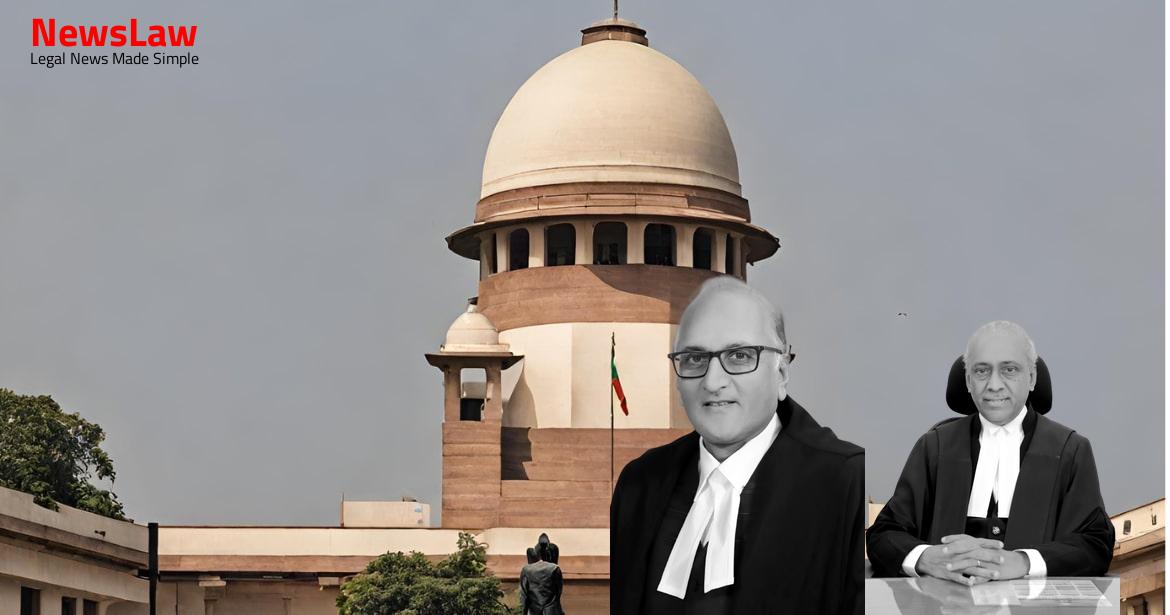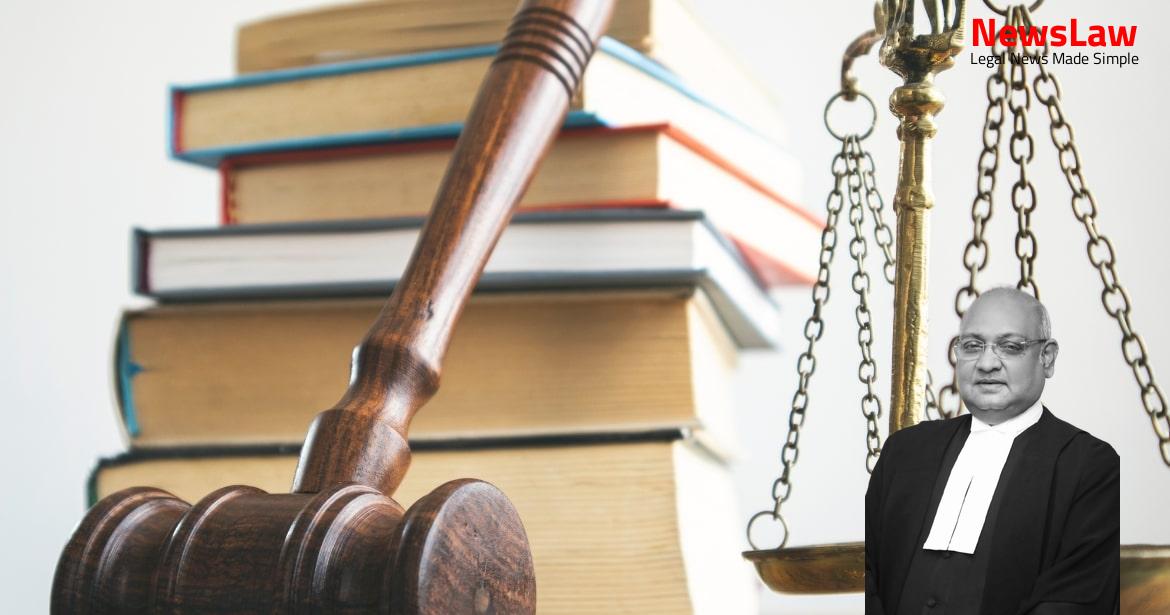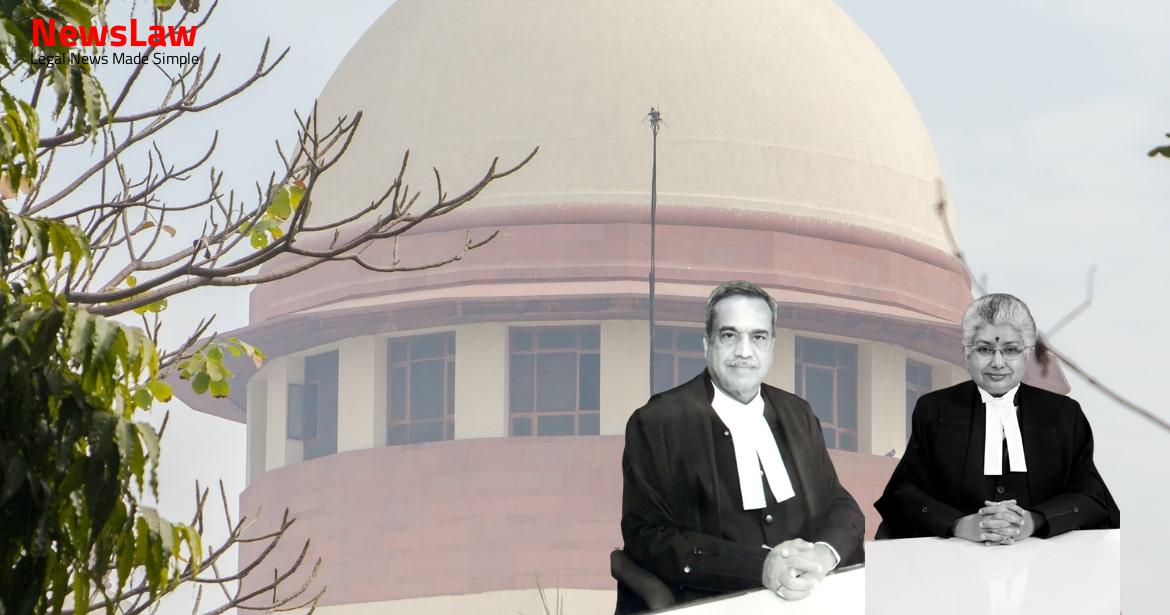In the case of Kulsum R. Nadiadwala v. State of Maharashtra, the dispute over land acquisition for defense purposes raises crucial legal issues. The respondent, Mr. Actual Name, has defended the Bombay High Court’s judgment, while Ms. Pandey, representing the petitioners, argued against the one-year delay in filing a writ petition challenging the acquisition. This case highlights the importance of timely legal actions in land acquisition matters with national security implications.
Facts
- The Central Government issued a section 4 notification to establish a Central Ordinance Depot for the Union of India for defense purposes.
- The Central Government, as the beneficiary of the lands, did not appear during the appeal hearing.
- Symbolic possession of the lands in Village Malad was taken by the State on 06.01.1987 and has remained with the State since then.
- In a similar case involving other lands in Village Malad, the Court ruled in favor of the landowner in Kulsum R. Nadiadwala v. State of Maharashtra and Ors. (2012) 6 SCC 348.
- References were made under Section 18 and 30 of the Act on 23.09.1986 related to the proceedings.
- The High Court upheld the plea of the respondents based on the judgment in Kulsum R. Nadiadwala Vs. State of Maharashtra (2012) 6 SCC 348.
Also Read: Legal Analysis of Property Occupation in Insolvency Resolution
Arguments
- Ms. Pandey, learned counsel, argued that a huge delay in filing a writ petition against a Section 4 notification cannot be accepted as a matter of law.
- The delay in the referred case is only of one year from the issuance of the Award in 1986 to the filing of the writ petition in 1987.
- Ms. Pandey raised the issue of delay as a bar to challenging the acquisition after 27 years and questioned the validity of the acquisition in the eye of the law.
- She argued that the judgement in Kulsum R. Nadiadwala’s case did not fully quash the entire Section 4 notification but restricted the claim to 50% of the land.
- Ms. Pandey highlighted the ongoing consideration by a Constitution Bench regarding the applicability of delay as grounds for dismissing a writ petition based on laches in land acquisition challenges.
- She stressed the significance of the land acquisition for defense purposes, with possession held by the Union Government since 1942.
- The respondent, Mr. Actual Name, defended the impugned judgment passed by the Bombay High Court.
- He argued that the judgment was based on sound legal principles and evidence presented during the trial.
- Mr. Actual Name pointed out that the High Court had carefully considered all relevant facts and applicable laws before reaching its decision.
- He emphasized that the High Court’s judgment was in accordance with precedents and established legal doctrines.
- Mr. Actual Name highlighted specific points from the High Court’s judgment that supported its validity and correctness.
- In conclusion, he asserted that the impugned judgment should stand as it was legally sound and well-reasoned.
Also Read: Legal Analysis on Physical Ability in Rape Case
Analysis
- The requirement of publishing notification under Section 4 in the Official Gazettee and public notices in the locality are both mandatory and cumulative conditions.
- Specific contention raised by the Petitioners in the Writ Petition that they were not served with any notice or offered the opportunity to raise objections to the notification under Section 4.
- Affidavit of the Special Land Acquisition Officer was silent on the factual and legal challenge raised by the Petitioners.
- The ‘per incuriam’ point can be disposed of by stating…
- The Section 4 notification was not duly published, which led to the writ petition being filed by the respondents in 2002.
- The entire acquisition proceedings were quashed in Kulsum R. Nadiadwala’s case as the Section 4 notification was declared null and void.
- The court emphasized the mandatory requirement of public notice under Section 4(1) of the Act, stating that strict compliance is essential even if the interested parties are aware of the proceedings.
- The court cited J&K Housing Board v. Kunwar Sanjay Krishan Kaul to reinforce the necessity of following the prescribed procedures under the Act.
- The acquisition of lands in question was deemed null and void due to non-compliance with Section 4(1) requirements.
- The Supreme Court did not find it necessary to delve into other issues raised by the appellants in light of the conclusion reached regarding compliance with Section 4(1).
- The case did not require a delay awaiting a judgment from the Constitution Bench due to its relation to a Defence project possessing the land since 1942, similar to Kulsum R. Nadiadwala’s case.
- A distinction was made between a general declaration of law binding all future cases and the specific relief granted based on the facts of a particular case.
- The judgment in Kulsum R. Nadiadwala’s case addressed the restrictions on appellants’ claim but also mentioned other claimants, leading to the specific relief granted.
- The case’s reference to a larger Bench for delay and laches issue was deemed unnecessary given the specific circumstances of the present case.
- The High Court dismissed the writ petition filed by Kulsum R. Nadiadwala
- The dismissal was based on a 12-year delay in filing the petition, not a one-year delay
- The Award in this case was passed in 1986
Also Read: Legal Analysis on Admissions and Document Consideration in Insolvency Case
Case Title: UNION OF INDIA Vs. GOPALDAS BHAGWAN DAS AND ORS (2020 INSC 127)
Case Number: C.A. No.-003636-003636 / 2016



